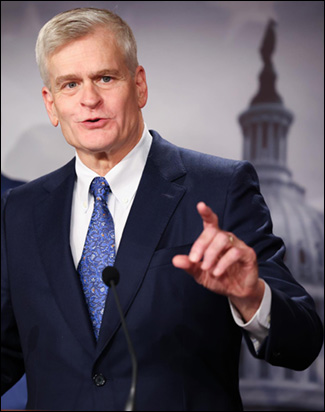By Jim Ellis — Monday, Jan. 6, 2024
Governor
As the new Congress begins, election observers are already contemplating how the many open 2026 Governors’ campaigns might affect the razor-thin US House majority.Looking toward next year’s election, a total of 36 states will host gubernatorial campaigns. In the 19 places where term limits are in effect, we will see open statewide contests. In many of these developing races, US House members are potential candidates. Therefore, protecting the small GOP majority with a large number of open seats becomes an even more difficult task.
Representatives who could run for an open Governor’s position are already rumored or announced in 10 states: Alabama, Colorado, Florida, Kansas, Maine, Michigan, Minnesota, New Jersey, South Carolina, and Tennessee.
Alabama Sen. Tommy Tuberville (R) opting to seek re-election instead of running for Governor opens the field to replace term-limited Gov. Kay Ivey (R).
It is unlikely that Rep. Mike Rogers (R-Weaver/Gadsen) will risk his role as chairman of the House Armed Services Committee to run for Governor, but he is considered a possible candidate. Rep. Gary Palmer (R-Hoover), chairman of the House Policy Committee, is also a potential gubernatorial contender.
Already, polling is suggesting that Rep. Joe Neguse (D-Lafayette/Boulder) is the leading potential candidate to succeed term-limited Colorado Gov. Jared Polis (D). Yet we can expect a lively Democratic primary possibly between Reps. Neguse and Jason Crow (D-Aurora). It is doubtful that any Centennial State Republican House member, largely comprised of freshmen, will jump into the open Governor’s campaign.
Florida Gov. Ron DeSantis (R), being ineligible to seek a third term, leaves a wide-open succession field. The person DeSantis appoints as the new Senator when incumbent Marco Rubio is confirmed as the US Secretary of State may influence who runs for Governor. Rep. Byron Donalds (R-Naples) is the congressional member most often mentioned as having an interest in running for the office. The eventual GOP nominee will have the inside track of winning the next Sunshine State gubernatorial general election.
In Maine, all eyes are on whether Rep. Jared Golden (D-Lewiston) will attempt to replace term-limited Gov. Janet Mills (D). So far, Golden has not provided any hints about his future political plans.
The odd-year New Jersey open Governor race has already attracted two Democratic House members into the 2025 campaign, Reps. Mikie Sherrill (D-Montclair), who leads in early polling, and Josh Gottheimer (D-Wycoff) who enjoys a big edge in fundraising.
At the end of this term, Henry McMaster (R) will be the longest-serving Governor in South Carolina history but cannot run again to succeed himself. South Carolina has a two-term limit, but McMaster ascended to the office from his post as Lieutenant Governor when then-Gov. Nikki Haley resigned to become US Ambassador to the United Nations and did so during a time frame that still allowed him to run for two full terms.
A crowded open Republican primary field will form and could feature two US House members. Both Reps. Nancy Mace (R-Charleston) and Ralph Norman (R-Rock Hill) have indicated they are considering gubernatorial bids. Mace has also not quelled speculation that she could challenge Sen. Lindsey Graham (R) as he seeks renomination for a fifth term.
In Tennessee, several Republican House members are considering a bid for Governor but could be effectively blocked should just re-elected Sen. Marsha Blackburn (R) continue to make moves suggesting that she will run.
Reps. Tim Burchett (R-Knoxville), Andy Ogles (R-Columbia), John Rose (R-Cookeville), and Mark Green (R-Clarksville) have all either indicated they are considering running for Governor or speculation has surrounded them regarding launching such a campaign. Incumbent Republican Bill Lee is ineligible to run for a third term.
While a midterm election cycle typically attracts lower voter interest, 2026 will feature a large number of competitive statewide campaigns. Expect the many open Governors’ races to also ignite a round of political musical chairs in several US House delegations.







